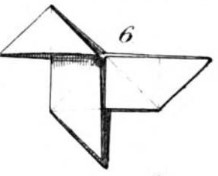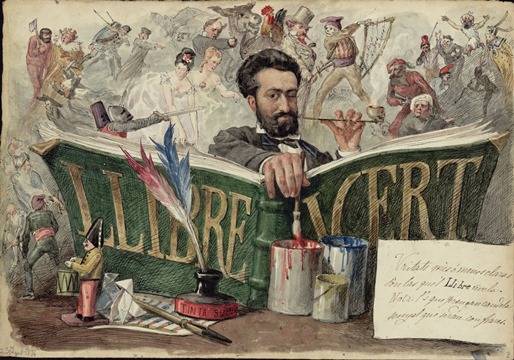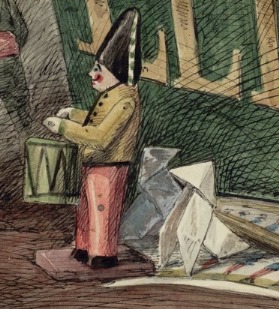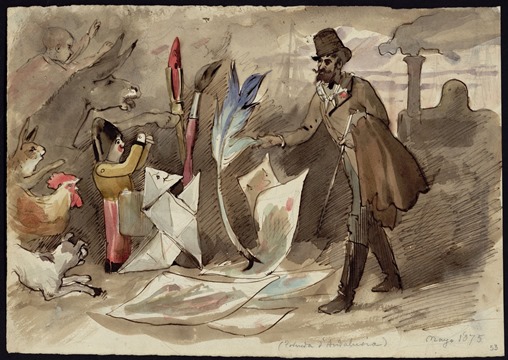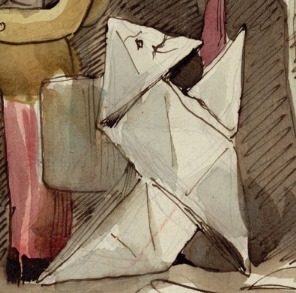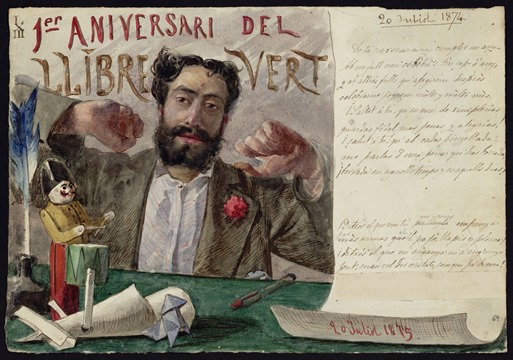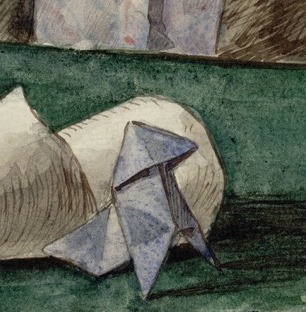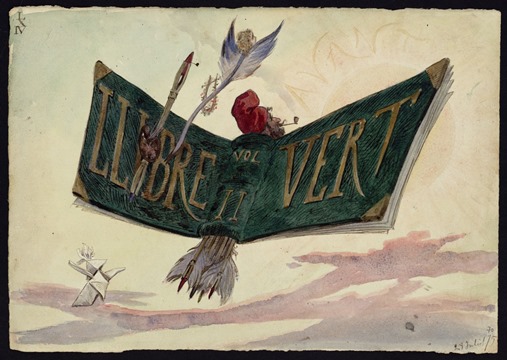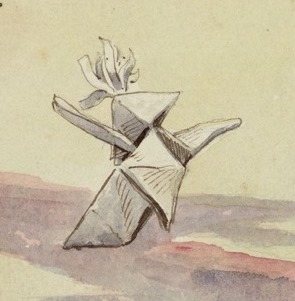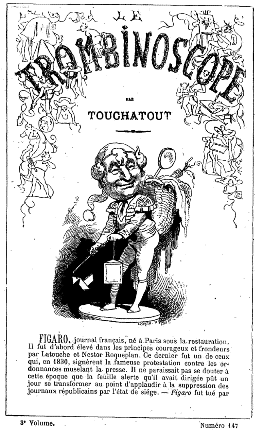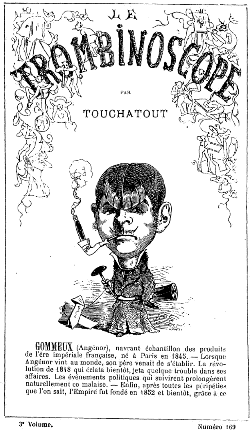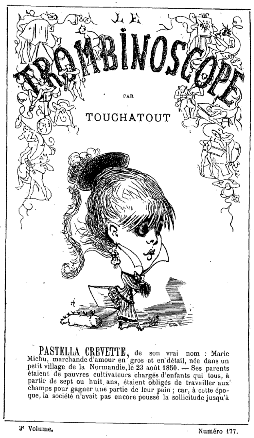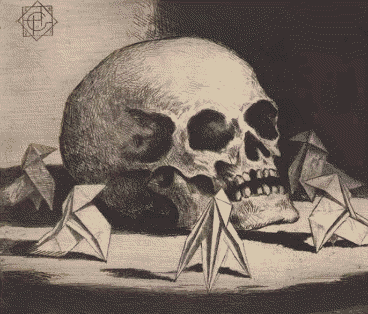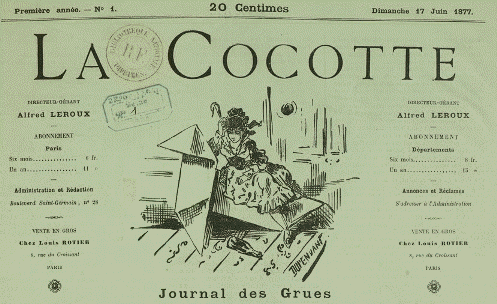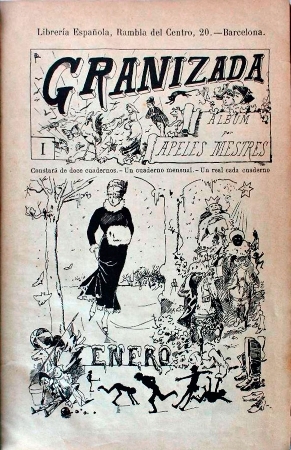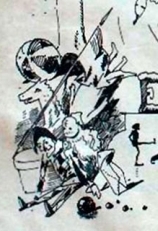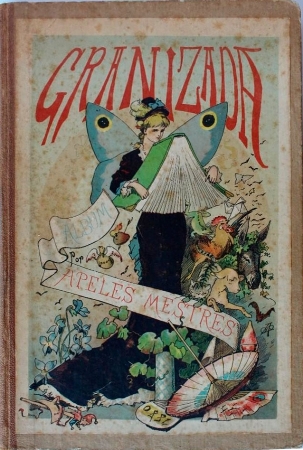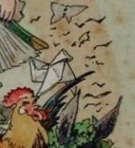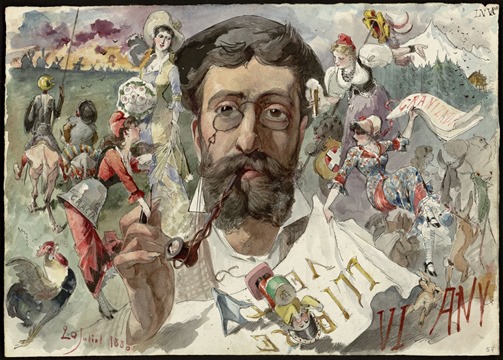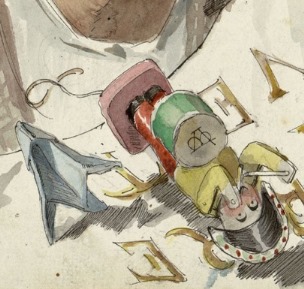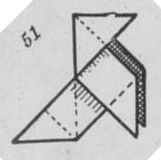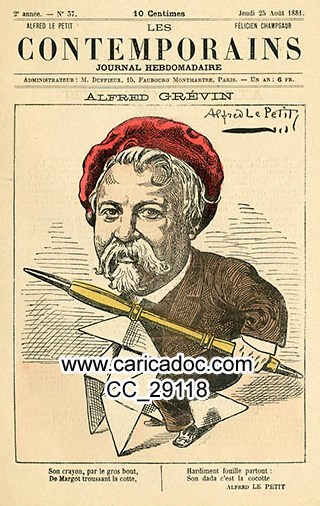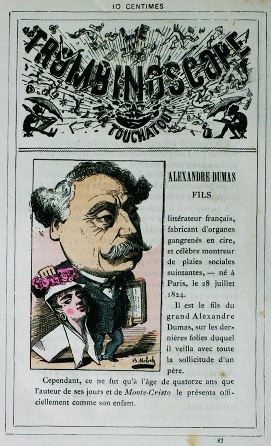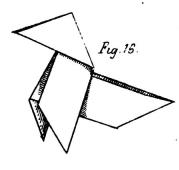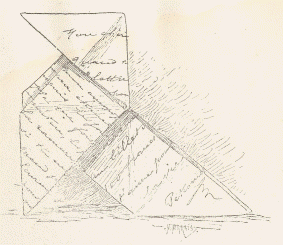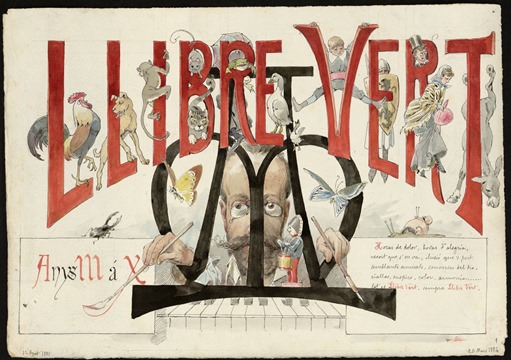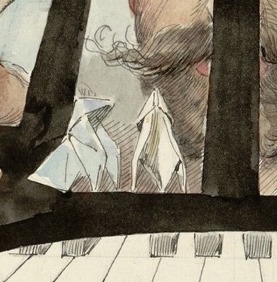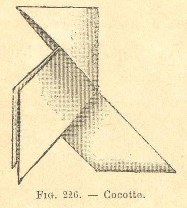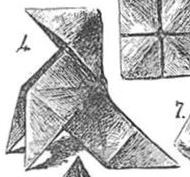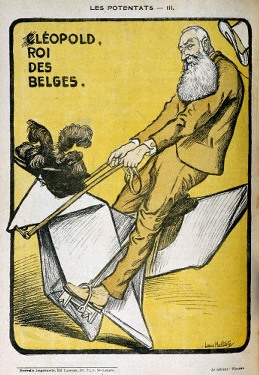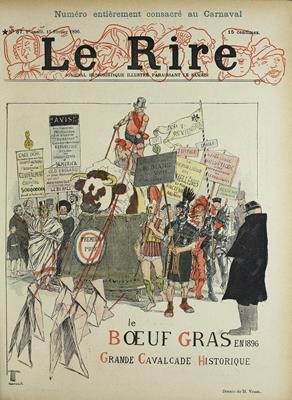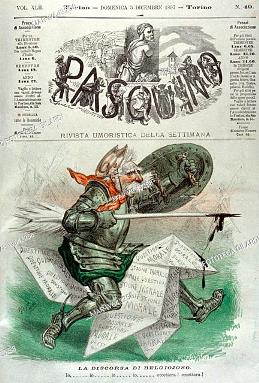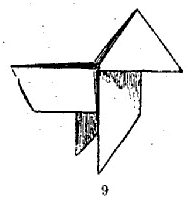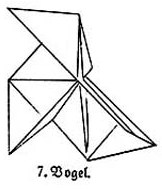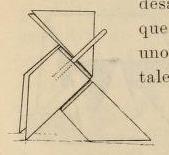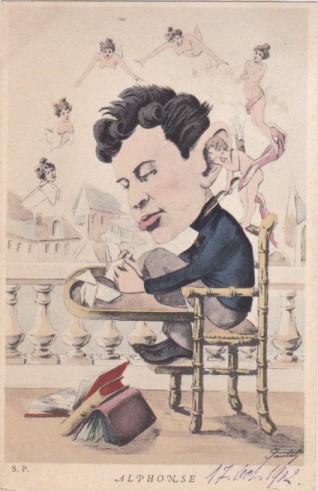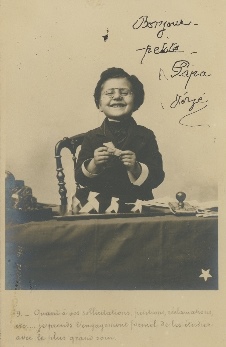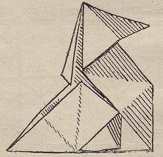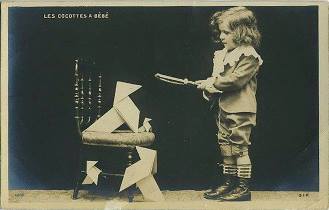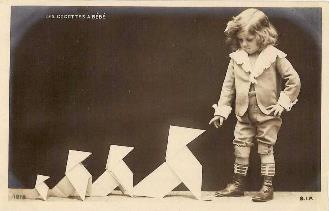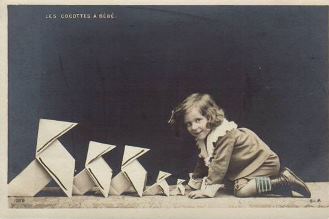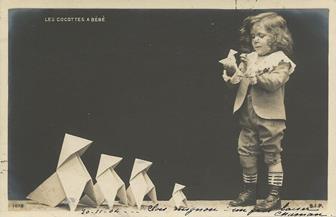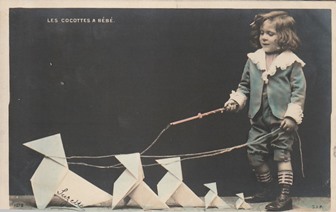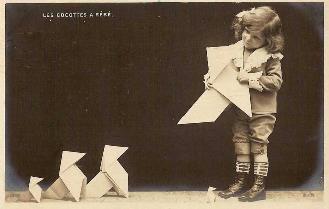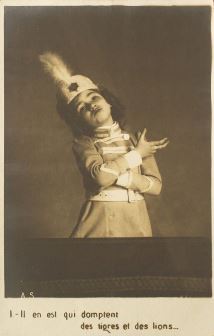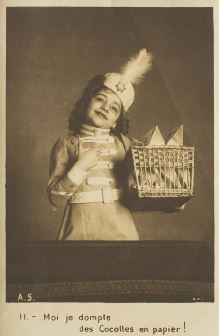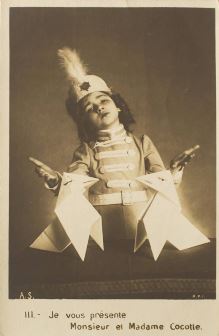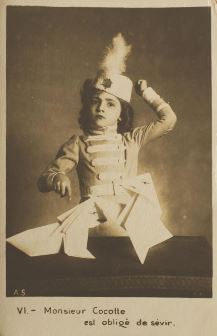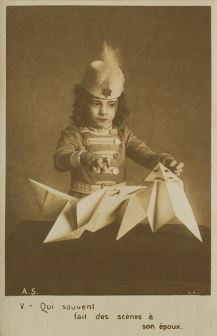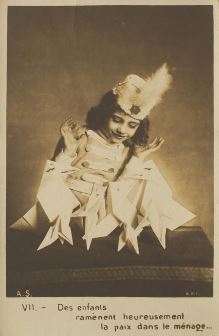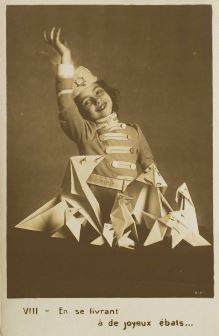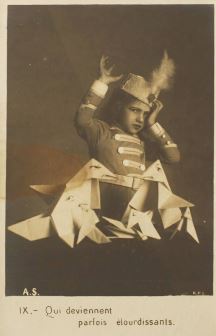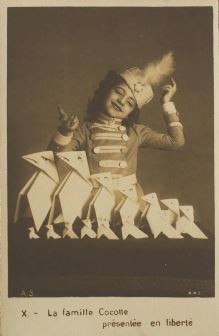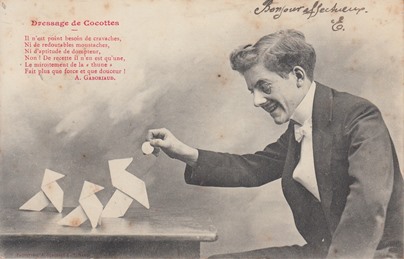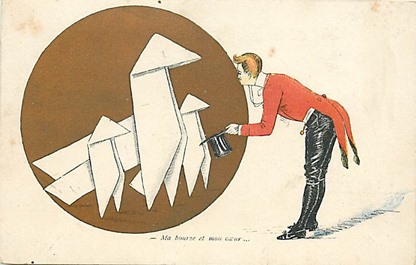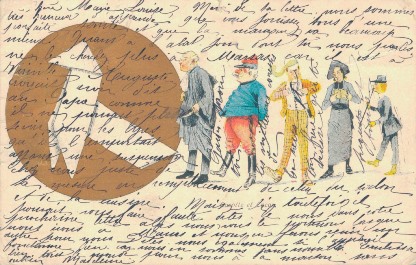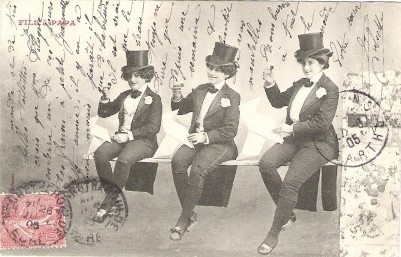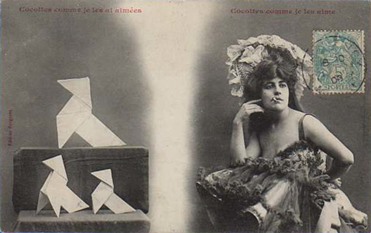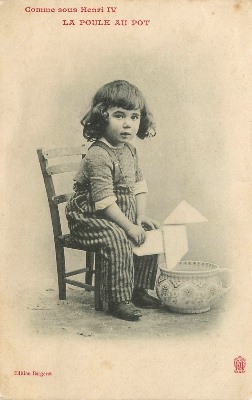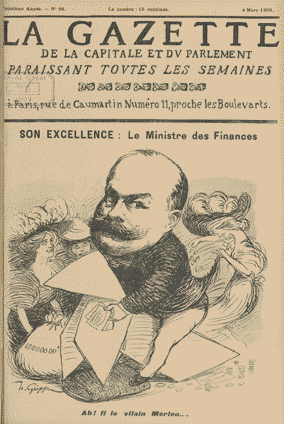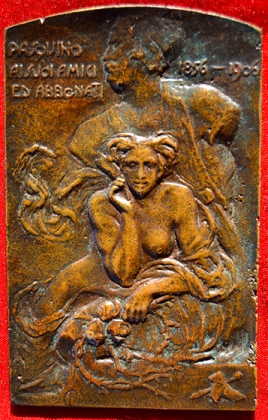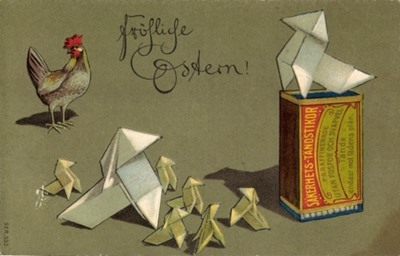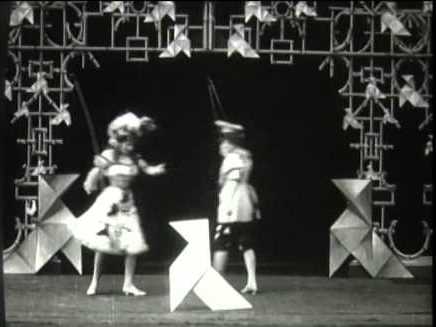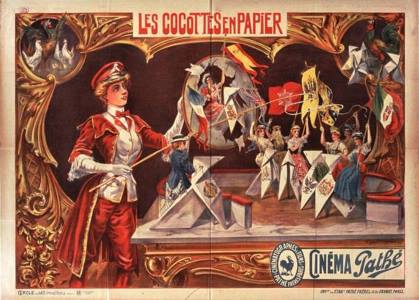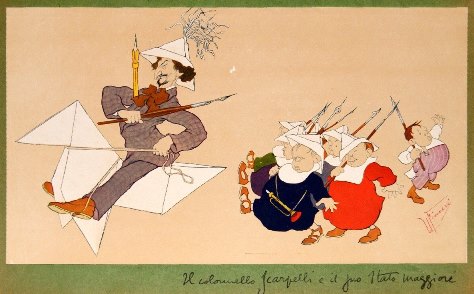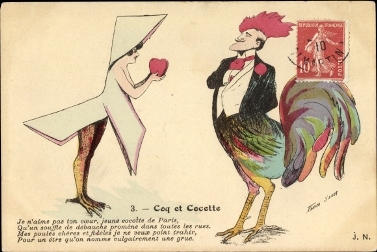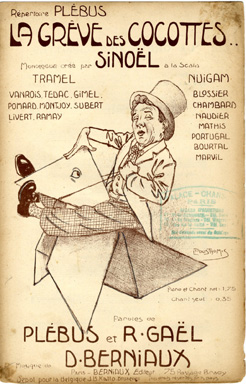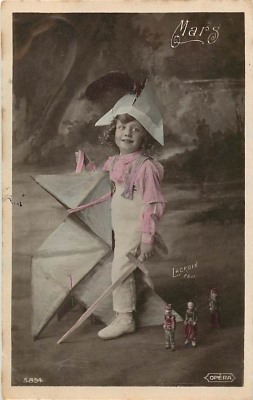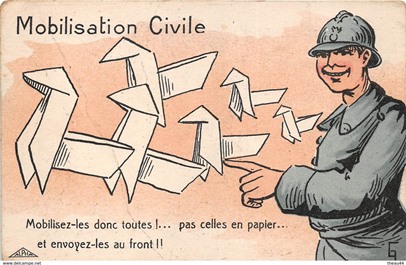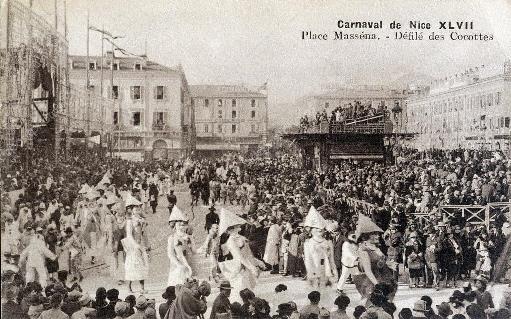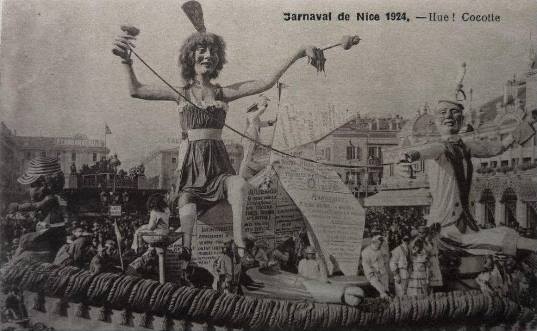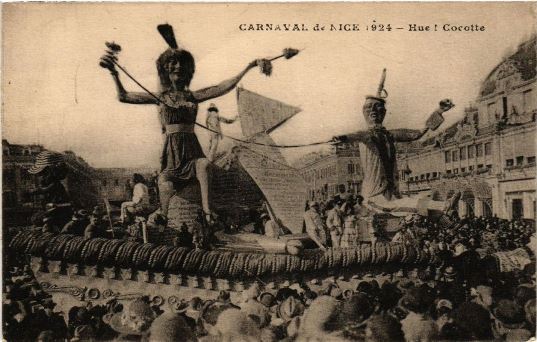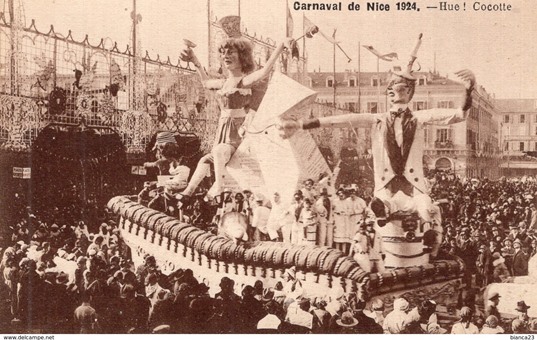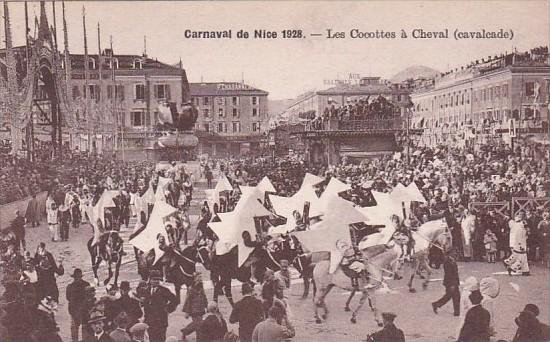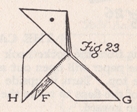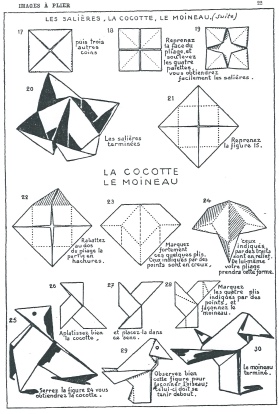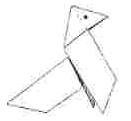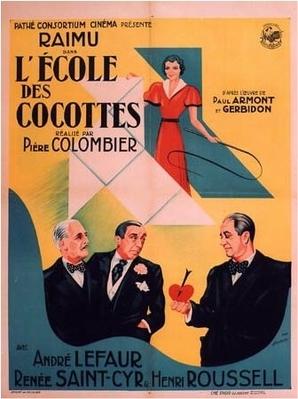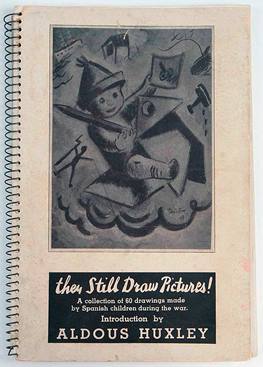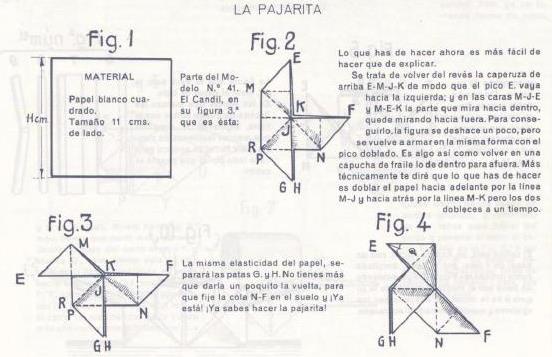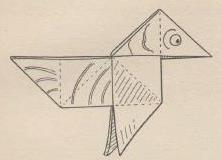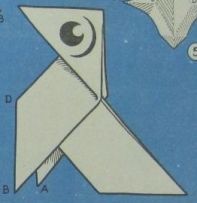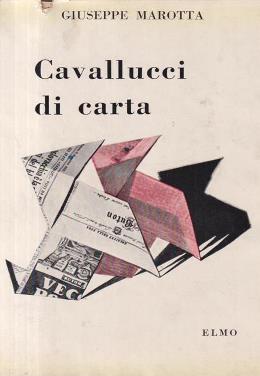| Origami Heaven A paperfolding paradise The website of writer and paperfolding designer David Mitchell
|
|||||||
| The Cocotte / Pajarita / Krähe / Sprinkhaan / Hobby Horse | |||||||
This page attempts to record what is known about the origin and history of the traditional origami design known as the Pajarita in Spanish and the Cocotte in French. Please contact me if you know any of the information on his page is incorrect or if you have any other important information that should be added. Thank you. The Cocotte / Pajarita design has other names, often several other names, in other languages. Some of these names interpret the design as a bird, others as a horse and some as another creature entirely such as a grasshopper or dragon. There is a separate page about Le Moineau, a version of the Cocotte / Pajarita design developed into a sparrow. As far as I know the Cocotte / Pajarita design has no settled name in Italian. In German the oldest name seems to be Krahe, but others, such as Drachen, also exist. In English the name Hobby Horse has been used since 1948 (see entry below for that year) but probably not before that date. In French the word Cocotte can also refer to a hen, a casserole dish, a paperfold in general, or a prostitute. The word should not be interpreted as referring to this specific paperfold without adequate contextual support. In Spanish the word Pajarita can also bear a wide range of meanings and the same necessity for having adequate contextual support applies. Even when it refers to a paperfold it does not always refer to the Cocotte / Pajarita design. For instance, in 'Guia Practica del Trabajo Manual Educativo' by Ezequiel Solana, which was published by Editorial Magisterio Español in Madrid in 1904, the Flapping Bird is called the 'Pajarita de Movimiento' and in 'El Mundo de Papel' by Dr Nemesio Montero, which was published by G Miranda in Edicions Infancia in Valladolid in 1939, the Flapping Bird is referred to as 'Pajarita que mueve las alas'. Like many other traditional paperfolds the Cocotte / Pajarita design is probably much older than the evidence for its existence, though just how much older, is, of course, impossible to say. It is noteworthy that many of the illustrations on this page picture Cocottes which are anatomically incorrect in one way or another. I have no idea why this should be the case. It is also noteworthy that although Cocotte means 'hen' and Pajarita 'little bird' many of the illustrations on this page show Cocottes / Pajaritas being ridden like horses. As far as I know no academic study has been conducted into the symbolism of the Cocotte / Pajarita in French, Spanish and Italian satirical magazines. Such a study seems long overdue. There are many other images of Cocottes / Pajaritas which cannot be dated precisely and can not therefore be accurately slotted into the timeline on this page. In Japan According to Koshiro Hatori in his article 'History of Origami in the East and the West before Interfusion', published in 'Origami 5: Fifth International Meeting of Origami, Science, Mathematics and Education', the Cocotte / Pajarita design was not known in Japan until the kindergarten system became established there. The earliest publication in a Froebelian book is in 1863 (see below) and so it is possible that the design may have reached Japan with the setting up of the first kindergarten in 1876 or shortly thereafter. I can, however, find no record of any publication of the design in Japan at an early date (or indeed at all). If it did reach Japan at an early date it is possible that it failed to arouse much interest because the Japanese origami repertoire already included much more realistic representations of birds. The design shown below, which is a simple dog, or puppy, derived from a Cocotte / Pajarita by the addition of one extra fold, is said to be of Japanese origin and to possibly date back to the Meiji period. Unfortunately, I do not know of any evidence to support either of these assertions.
********** In Western Europe / America As far as I know the Cocotte first appears in the historical record in a painting by Jeanne Elisabeth Chaudet Husson (1767 to 1832) entitled 'Marie-Laetitia Murat portant le buste de Napolean', which can be dated to 1806. The picture also shows the fold and cut Playing Card Monk.
********** In his book 'Jugenderinnerungen eines altes Mannes' (Youth Memoirs of an Old Man), published by Wilhelm Herz Verlag Berlin in 1870, Wilhelm von Kügelgen describes how, in about 1812, when the family were living in Dresden, his then tutor, the painter Carl Adolf Senff (1785-1863), taught him, together with his siblings Gerhard and Adelheid, and the Leipzig friends Alfred and Julius Volksmann, to fold Krahen (crows). It is clear from the description that these were Cocottes / Pajaritas. The children learned to add further folds to develop these crows into Ross und Reiter (Horses and Riders), some of which still survive in museums in Germany.
In English, very roughly, and with the omission of difficult parts, 'The most enjoyable thing that Senff taught us was the art of folding certain small triangular shapes, otherwise known as 'crows', out of paper, but when they were made, the last fold was so difficult that it could not be taught … We used to leave this accomplishment to the old master Senff for quite some time until we finally got to grips with it one by one.' It is not clear where Senff might have learned to fold Cocotte / Pajaritas, since there is no other evidence for this design in Germany at this date. There is no evidence that he had, for instance, spent time in France. ********** 'Manuel Complet des Jeux de Société' by Elisabeth Celnart, which was published by La Librairie Encyclopedique de Roret in Paris in 1827, contains instructions, but no illustration, explaining how to fold 'les oiseaux' by blintzing a square three times and pulling out the folds. The instructions appear to explain how to make a Cocotte / Pajarita (the version that would now be folded from a blintzed windmill base), except that no mention is made of the necessity to reverse fold the head.
********** This drawing from 'La Caricature', No 63 of 12 January 1832 includes both a Cocotte and a Newspaper Hat.
It is worth noting that the publication of this drawing, along with an article and another drawing from the same issue, was the basis of a prosecution brought against the editor of La Caricature, Charles Philipon, which resulted in him being sentenced to six months imprisonment and being fined 2000 francs. (Information from Juan Gimeno) ********** A print by Grandville published in the French magazine 'La Caricature' no 109 of 6 December 1832, which can be found online at https://gallica.bnf.fr/ark:/12148/bpt6k1048946v/f1.item, shows six Cocottes standing on top of the central monument. My thanks to Juan Gimeno for this information.
********** The following week's edition of 'La Caricature', no 110 dated 13th December 1832, which can be found online at https://gallica.bnf.fr/ark:/12148/bpt6k1048948p.item, also contained a cartoon by Grandville showing Cocottes. They are of varying sizes, apparently advancing to attack a toy village. My thanks to Jaume Coll Guerrero for this information.
A drawing taken from this cartoon, along with a detailed explanation of the identity of each figure and their meaning, appears in 'Histoire des Jouets' by Henry Rene D'Allemagne which was published by Librairie Hachette in Paris in 1902. (Information from Juan Gimeno)
********** This cartoon of Prosper Enfantin by Michael Delaporte appeared in issue 8 of the French satirical magazine 'La Charge' in 1833.
********** Another drawing by Grandville, from his series 'albums de la vie privée et publique des animaux dessinés' and which can therefore be dated to either 1841 or 1842, shows two Cocottes and a Boat with Sail. From the collection of Paris Musees.
********** 'Juegos de los Ninos' which was published in Madrid by R y Fonseca in 1847, contains a section headed 'Pajaritas y otras figuras de papel doblado' which describes how to fold a Pajarita. There is no accompanying illustration. These instructions clearly depend on similar instructions in 'Manuel Complet des Jeux de Société' by Elisabeth Celnart, which was published in Paris in 1827 (see above). This is the earliest clear reference that I know of to the Cocotte / Pajarita design in Spain.
********** 'Mes Cocottes ou Memoires d'un Jeune Depute Flottant' was published in Paris in 1847. Three Cocottes appear on the title page but there are only two references to Cocottes in the text, on pages 16 and 38.
Page 16
Page 38
********** This print by Theodore Valerio, titled 'Le Chateau de Cartes', and said to date from 1850, includes two tiny Cocottes in the lower left hand corner.
********** This sketch from 1853 by Felix Nadar is ttled 'Polydore Millaud menant un attelage de cocottes en papier' (Polydore Millaud leads a team of paper cocottes).
********** This painting by P. Petrov, held in the Galeria Tretyakov in Moscow, which shows a child with a book, ball and a Cocotte / Pajarita can be dated to around 1855. Information from Jose Tomas Buitrago.
********** According to www.vetustideces.blogspot.com/2017/11/caricaturarte-29-el-salon-de-1855-8.html this engraving by the French illustrator Bertall (Charles Albert d'Arnoux) is a parody of the 1854 painting 'A retour de bal masqué; épisode du carnival of 1854 ' by Charles-François Marchal, an engraving from which is also shown below.
********** The list of paper folding designs in the 'Manuel Pratique de Jardins D'Enfants de Friedrich Froebel, which was compiled by J F Jacobs and published in Brussells and Paris in 1859, includes a 'L'oiseau'. From its position in the list it can be inferred that this is the Cocotte design. ********** 'De Kleine Papierwerkers', written by Elise Van Calcar and published by K H Schadd in Amsterdam in 1863, contains a drawing of 'De sprinkhaan', or 'grasshopper'.
********** 'Les Cocottes' by Paul Mahalin, was published in Paris in 1864 by G Kugelman. It is said to contain observations of the daily habits of Parisian prostitutes and a discussion of their role in society. The frontispiece pictures two different kinds of cocotte.
********** This cartoon by Paul Hadol of the French playwright Emile Augier, which references his play 'La Contagion', appeared in Le Charivari of 9th Apriul 1866. Information from Juan Gimeno.
********** The French satirical magazine 'La Lune' of 24th March 1867 contained two cartoons featuring Cocottes. Information from Jaume Coll Guerrero.
********** This cartoon by the illustrator Paul Hadol, titled 'les cocottes expulsées des cafés' is in the collection of Paris Musees and is dated to between 1860 and 1870.
********** During 1868 Cocottes appeared on three of the front covers of the French satirical magazine 'L'Eclipse'. 8th February 1868
***** 26th June 1868
***** 15th November 1868
********** A Cocotte is depicted in the painting 'Les Rieuses' (The Merrymakers) by Carolus Duran of Paris, which is in the collection of the Detroit Institute of Arts and can be dated to 1870.
A Cocotte is also depicted in a second painting by the same painter from the same year, this one entitled 'Enfant a L'Oiseau' (Child with Bird).
********** The French satirical magazine 'L'Eclipse' also featured a Cocotte on its cover on 10th April 1870.
********** The pornographic novel 'Souvenirs d’une cocodette', supposedly a memoir by the main character, Aimee, but in fact by Ernest Feydeau, and first published in Paris in 1870 by Philadelphie, contains a frontispiece showing a Cocotte covering, or perhaps censoring, the nakedness of the cocodette of the title. The attribution 'par G Flaubert' is a jokey reference to Gustave Flaubert's opinion that the book was 'tellement lubrique et indécent qu’aucun éditeur n’a consenti à le prendre' (so lecherous and indecent that no publisher would agree to take it). Flaubert and Feydeau were close friends. Information from Michel Grand. ********** This caricature of Napoleon III by Louis Jaugey appears in the first of six volumes of illustrated plates entitled 'Collection de caricatures et de charges pour servir à l’histoire de la guerre et de la revolution de 1870-1871' held at Cambridge University Library and in a similar collection, of nine volumes in this case, held at Heidelburg University. It shows 'Napoléon III as a proud peacock, wearing imperial insignia and the chain of the chivalric order of the Golden Fleece. Across his chest is a red sash bearing the date 2 December 1852, when Louis-Napoléon Bonaparte, then President of the Second Republic, became Emperor Napoléon III after a coup d’état. Although he has piles of bags overflowing with gold and silver coins labelled “war budget” and “taxes”, he has nothing to show but a magnificent appearance and in lieu of an army, a group of three paper cranes (sic) in the French national tricolour blue, white and red.' 'The daisy on the first of the paper cranes is an allusion to the emperor’s mistress, Marguerite Bellanger.' It does seem to me, however, that misidentifying the cocottes as 'cranes' means that this analysis is likely to be missing something important. For more information see https://europeancollections.wordpress.com/2019/03/11/caricatures-of-the-franco-prussian-war-and-the-paris-commune-1870-71/
Several other caricatures in the same collections also feature Cocottes:
********** A Cocotte was pictured in the background on the cover of the French satirical magazine 'Le Grelot' of 7th May 1871.
********** The cover of the French satirical magazine 'Le Sifflet' featured cartoons including Cocottes on both 8th and 29th September 1872.
********** This caricature featuring pajaritas appeared in 1873 in the satirical magazine 'La Flaca', which was published in Barcelona.
********** The design is pictured, as 'Eine Vogel' (A Bird) in the revised version of 'Der Kindergarten' by Hermann Goldammer which was published by Carl Babel in Berlin in 1874.
********** Pajaritas feature on the cover of several issues of Apeles Mestres' periodical 'Llibre Vert', which was published in Barcelona. Information from Juan Gimeno. From July 1874
*** From May 1875
*** From 20th July 1875
*** From 28th July 1875
********** These three caricatures, two showing men with Cocottes and the third Pastella Crevette / Marie Michu, with a Cocotte shadow, appeared in the French satirical periodical 'LeTrombinoscope' in June and November 1874 and January 1875 respectively.
********** This print by Henri-Charles Guerin, titled 'Les cocottes de la mort' dates from 1875. The catalogue of the exhibition 'A Curious Hand: The prints of Henri-Charles Guerard 1846–1897', held at the New YorkPublic Library in 2016/17 said 'This bizarre image shows a skull in a stand-off with five folded-paper origami. Surrounding and facing the grimacing skull, the paper creatures appear confrontational and even menacing. The meaning of the work is hard to ascertain, though the artist’s use of origami may suggest an allegory involving the triumph of Japanese art and/or japonisme.'
********** A cocotte was depicted in the masthead of the Parisian journal 'La Cocotte' in 1877.
********** This caricature by Andre Gill in the series 'Les Hommes D'Aujourd'hui' was published in 1878.
********** There is mention of a design called 'The Bird' in 'The Kindergarten Principle' by Mary J Lyschinska, which was published in London in 1880 by Wm Isbister Ltd, but no illustration is given. I presume this is the Pajarita / Cocotte. ********** The front covers of both the January 1880 issue of Apeles Mestre's 'Granizada' and the album, published in Barcelona, both include Pajaritas. Information from Juan Gimeno.
********** The July 1880 cover of Apeles Mestres' periodical 'Llibre Vert', which was published in Barcelona, also featured a Pajarita. Information from Juan Gimeno.
********** The design appears, as 'The Bird' in part two of 'The Kindergarten Guide' by Maria Kraus Boelte and John Kraus, which was published in 1881 by E. Steiger and Company in New York.
********** This caricature of the cartoonist Alfred Grevin riding a Cocotte appeared on the cover of the issue of 'Les Contemporains' for 1st August 1881.
********** This caricature of Alexandre Dumas Fils, also featuring a Cocotte, was published in 'Le Trombinoscope' in 1882.
********** 'Giuochi Fanciulleschi Siciliani' by Giuseppe Pitri, which was published by Luigi Pedone Lauriel in Palermo in 1883, contains an image of the Cocotte / Pajarita design under the name 'Lu Cavadduzzu' (the little horse).
********** 'Les Cocottes de Mon Grand-Pere' a chapter, appearing in a book of the same name by Alfred Delvau, which was published by C Marpon and E Flammarion in Paris in 1884 mentions and illustrates folded paper cocottes on several occasions.
********** The May 1884 cover of Apeles Mestres' periodical 'Llibre Vert', which was published in Barcelona, also featured Pajaritas. Information from Juan Gimeno.
********** Instructions for folding the design were published, as the 'Cocotte or Poule' in 'L'Annee Preparatoire de Travail Manuel' by M P Martin, which was published by Armand Collin & Cie in Paris in 1893.
********** The design was also pubished as 'La Pajarita' in 'Cuestiones de Pedagogía Práctica: Medios de Instruir' by D Vicente Castro Legua, which was published by Libreria de la Viuda de la Hernando y Ca in Madrid in 1893
********** The design is pictured, but not named, in Eleonore Heerwart's 'Course in Paperfolding' was first published in Dutch in 1895 then in English by Charles and Dible in London and Glasgow in 1896.
*********** This image shows Leopold II of Belgium riding a Cocotte. The crossed out 'C' that makes the name 'Cleopold' seems to be a reference to the ballet dancer Cleo de Mérode. (Information from Juan Gimeno.) The image probably dates from 1896 when, according to Wikipedia, 'King Leopold II attended the ballet and saw Mérode dance. The 61-year-old Belgian King became enamoured with the 21-year-old ballet star, and gossip started that she was his latest mistress.' (https://en.wikipedia.org/wiki/Cléo_de_Mérode)
********** Cocottes also featured on the cover of the 15th Feb 1896 issue of the French satirical magazine 'Le Rire'
********** There is a somewhat similar image on the front cover of 5th December 1897 issue of the Italian satirical magazine 'Il Pasquino', which was published in Turin.
********** The design appears as 'La Cocotte' in 'Le Livre des Amusettes' by Toto, which was published in Paris by Charles Mendel in 1899.
********** The design also appears in 'Die Frobelschen Beschaftigungen: Das Falten' by Marie Muller-Wunderlich, which was published by Friedrich Brandstetter in Leipzig in 1900.
********** Apuntes para un tratado de cocotologia' (Notes for a Treatise on Cocotology) was published as an appendix to the novel 'Amor y Pedagogia' (Love and Pedagogy) by Miguel de Unamuno, by Henrich y Ca in Barcelona in 1902. The treatise is a whimsical, perhaps tongue-in-cheek / satirical, discussion of the Cocotte / Pajarita design attributed to Don Fulgencio, the main character in the novel itself. Most of it seems to be deliberately obscure. The actual paperfolding content is restricted to a mention in passing of, and an illustration of, the traditional Table and a discussion of the ways in which Cocottes / Pajaritas with different characteristics can be achieved by blintzing the paper various numbers of times. Three variants are described. Adequate instructions for producing the designs are lacking but they can be worked out with a little fiddling around. 1, The basic Cocotte / Pajarita developed from a doubly blintzed square (or from a windmill base). 2, A smaller version developed from a triply blintzed square, which has 'two triangular bags' ie pockets, the openings for which are on top of its head. 3, A still smaller version developed from a quadruply blintzed square, which has a double-layered head (so that there are upper and lower parts to the beak) and pockets in the neck. Only this version is illustrated.
********** This satirical postcard from 1902 shows a child folding Cocottes / Pajaritas which then transform into a nymph whispering in his ear. The name Alphonse suggests this postcard was produced in France. However, Juan Gimeno has suggested that the child is in fact a representation of the young King Alfonso XIII of Spain, who was famed for his hectic extra-conjugal love life.
********** This postcard from 1902 is part of a set of ten which showed a child posing as an election candidate, in this case with Cocottes.
********** Diagrams appear in 'Guia Practica del Trabajo Manual Educativo' by Ezequiel Solana, which was published by Editorial Magisterio Español in Madrid in 1904. The author notes, 'Among all the folding figures none is as well-known as this one. Rare is the child who does not know how to make it.'
********** This set of six postcards titled 'Les Cocottes a Bebe' were in circulation in 1904.
********** This set of ten postcards featuring Cocottes were also in circulation in 1904. The sepia set is shown in full. Tinted green and red versions of at least one of the cards, and quite possibly all, were also in circulation.
Information from Juan Gimeno and Jaime Coll Guerrero ********** This postcard, titled 'Dressage de Cocottes' also dates from 1904.
********** These two postcards were also in circulation in and around 1904. Ma bourse et mon couer ...
*** Cocottes et Cocos
********** Another one from 1905.
********** This Japanisme style print titled 'Composition jouets et branche fleurie' by Prosper Isaac dates from 1906.
********** This second postcard, also from 1906, contrasts 'Cocottes I used to like' with 'Cocottes I like now'.
********** This postcard was also in circulation in 1906.
********* A Cocotte was featured on the cover of the issue of 'La Gazette' for 4th March 1906.
********** This small metal plaque, which measures 8.5 x 5.3 cm, bears the legend 'Pasquino to his subscriber friends 1856 - 1906' and was presumably given to loyal subscibers of the satirical Italian magazine 'Il Pasquino', published in Turin, in 1906, the last year mentioned. There is a tiny image of a Pajarita / Cocotte in front of a stylus in the bottom left corner. Information from http://www.tuttilibriiomilibro.it/item/la-placchetta-del-pasquino/
********** This German postcard was in circulation in 1907.
********** The last ever issue of the Catalan satirical magazine 'La Campana Catalana', published in Barcelona on 29th April 1908, contained a cartoon by Apeles Mestres which pictures several Cocotte / Pajaritas among a a variety of other paperfolding designs.
The one on the left has a colour-change, possibly indicating that it has been folded from a windmill base. The one on the right has pockets beneath the head, indicating it has been folded from a triply blintzed square. It is, perhaps, possible that the one in the centre, which lacks a colour-change, should be read as being folded from a blintzed windmill base. ********** This image is a still taken from the short film 'Les Cocottes en Papier' by Segundo de Chomón which was made in 1908.
The whole film, which lasts close to six minutes, and features paper cocottes throughout, can be viewed on You Tube at https://www.youtube.com/watch?v=fOQzhR-S0o8 ********** This poster, also from 1908, was used to advertise the film. Information from Juan Gimeno.
********** This drawing by Ugo Finozzi, titled 'Colonel Scarpelli and his General Staff' was published in the 1908 Christmas album of the Italian (Florentine) children's magazine 'Giornalino della Domenica'.
********** This postcard featuring a 'Coq et Cocotte' dates from 1910.
********** A painting depicting Cocottes, by the french painter Étienne-Adolphe Piot (1850-1910), and titled 'A young girl with origami birds', (though that cannot be the original title since the word origami would not have been in use in Europe during his lifetime) appeared in a catalogue for a sale at Sotheby’s auction house in early 2017. I do not know what year this picture was painted.
********** This illustrated sheet music cover dates to 1910. (Information from Michel Grand.)
********** This tinted postcard of a girl in a Newspaper Hat riding a Cocotte was in circulation in 1911.
********** This postcard by the illustrator GriFF is known to have been in circulation in 1917. (Information from Michel Grand.) It parodies the Mobilisation Generale ordered by the French government in 1914, seeming to suggesting that prostitutes should be sent to the front, and so possibly dates from that time.
********** This postcard shows a scene from the 47th Carnaval of Nice (Carnaval de Nice XLVII). The first such carnaval was held in 1873 so this postcard probably dates from 1920. The parade of figures in he foreground are wearing paper or cardboard hats seemingly made to resemble the head and beak of the Cocotte design.
********** These three postcards feature a Cocotte on a float during the 1924 Carnaval de Nice.
********** This postcard features a parade of 'Les Cocottes a Cheval' during the 1928 Carnaval de Nice.
********** Diagrams for a version of the Pajarita design folded, somewhat oddly, from a blintzed windmill base, and titled the 'Rooster', were included in 'Fun with Paperfolding' by Murray and Rigney, which was published by the Fleming H Revell Company, New York in 1928.
********** Diagrams for the Cocotte and the Le Moineau variant appear in Booklet 2 of 'Images a Plier', a series of 6 booklets published by Librairie Larousse in Paris in 1932.
********** The design also appears in Booklet 1 of 'Figuras de Papel', a series of 3 booklets published by B Bauza in Barcelona in 1932.
********* This poster for the 1935 film 'L'Ecole des Cocottes' features the paper version.
********** A child riding a Pajarita featured on the cover of this book of drawings made by children during the Spanish civil war, which was published in 1938.
********** The design also appears in 'El Mundo de Papel' by Dr Nemesio Montero, which was published by G Miranda in Edicions Infancia in Valladolid in 1939.
********** The design appears as 'Pajarita Simple' in 'El Plegado y Cartonaje en la Escuela Primaria' by Antonio M Luchia and Corina Luciani de Luchia, which was published by Editorial Kapelusz in Buenos Aires in 1940.
********** The Cocotte / Pajarita design was featured in one of the stories in the 1948 Rupert Annual and diagrams for the design were also included elsewhere in the book. The story, which was written and illustrated by Alfred Bestall, was called 'Rupert and the Hobby Horse' and the diagrams were headed 'How To Make A Hobby Horse' As far as I know this is the first recorded instance of this particular name being used for this design. A more detailed discussion of the hobby horse name for the Cocotte / Pajarita by David Lister can be found at https://britishorigami.info/academic/lister/hobby_horse.php
********** This Italian novel by Giuseppe Marotta was published in 1955 and features the 'Cavalluci di Carta' (Paper Seahorses) of the title on the cover, made by adding an extra fold to the standard Cocotte / Pajarita design. I do not know whether the cover design has any particular significance in relation to the content of the story.
********** |
|||||||
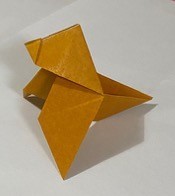



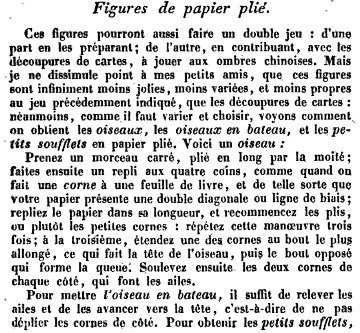
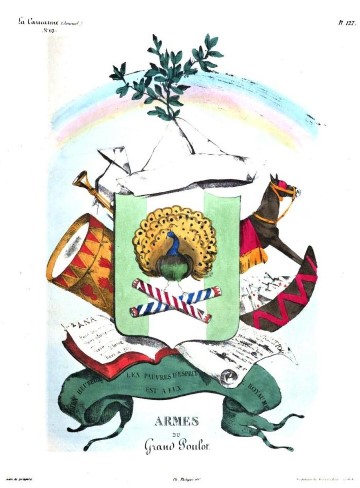
.jpg)
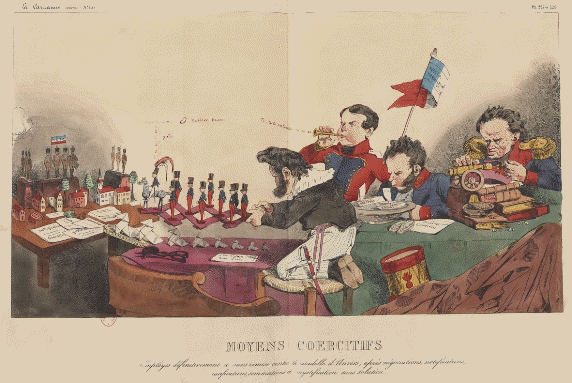
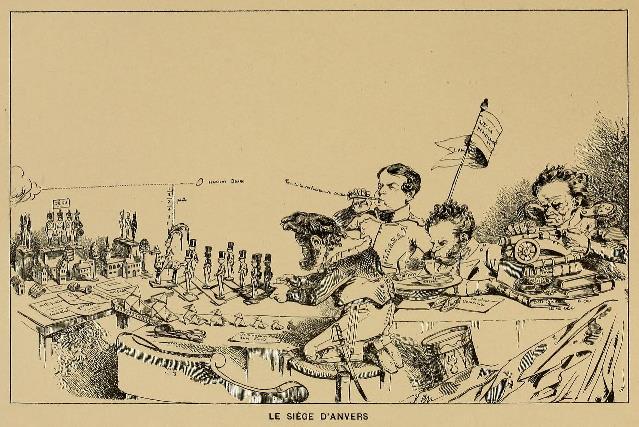
%201833.jpg)
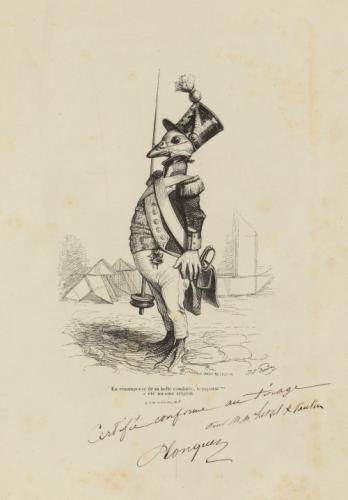
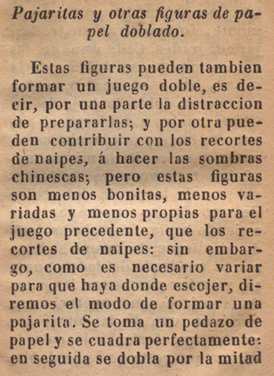
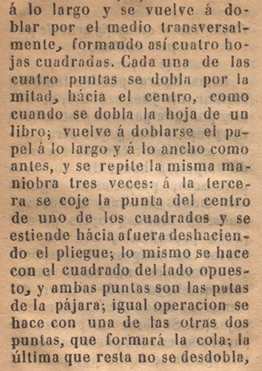
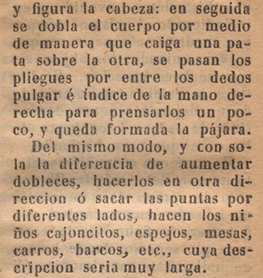
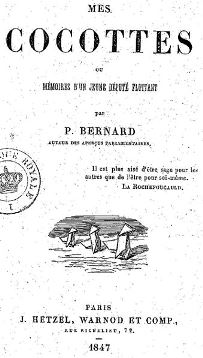


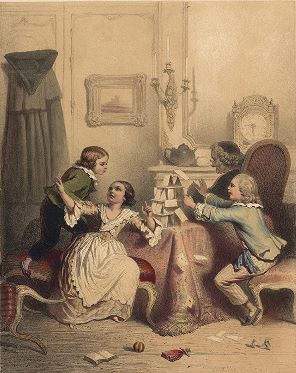
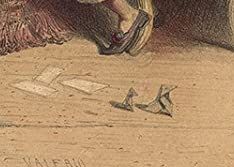
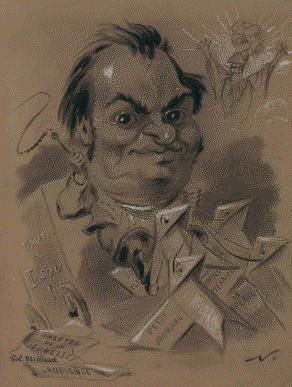

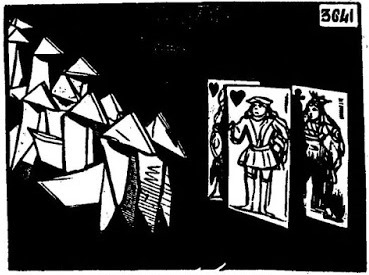
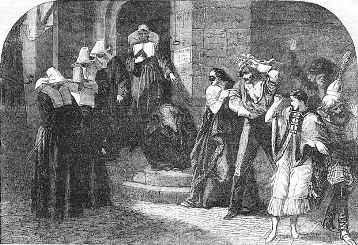
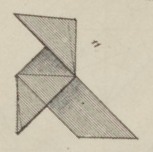
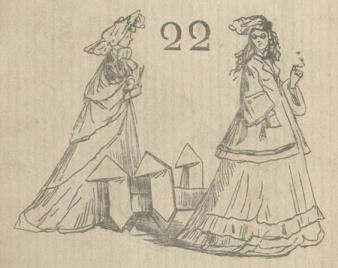
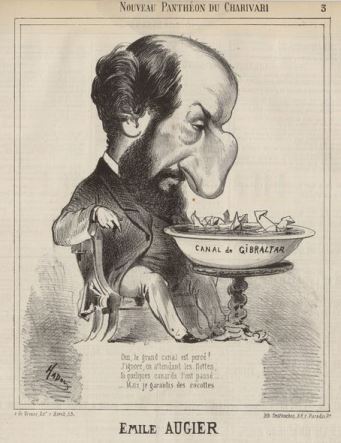
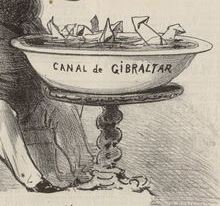
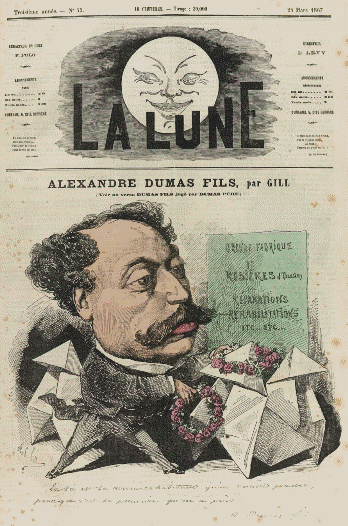
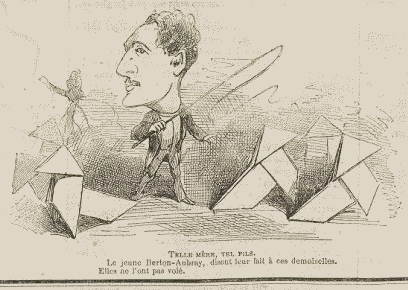
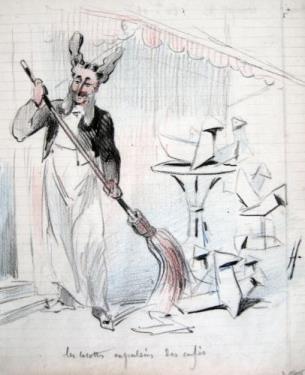
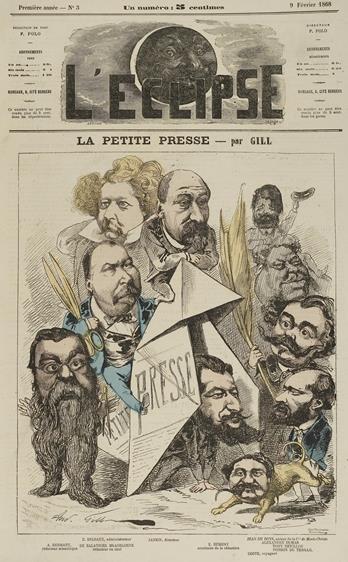
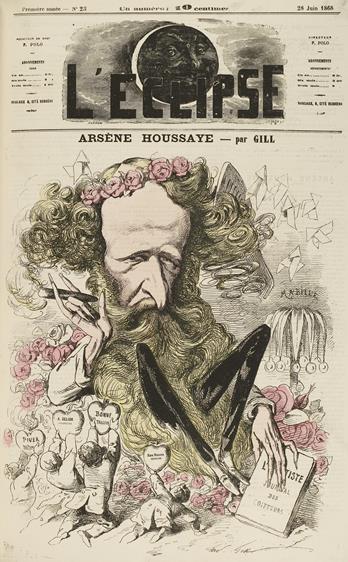
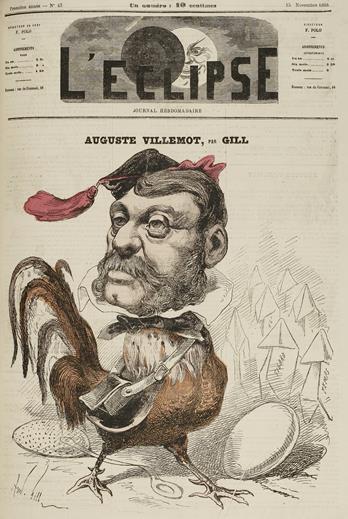
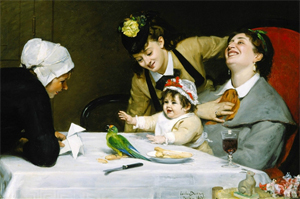
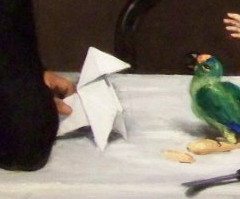
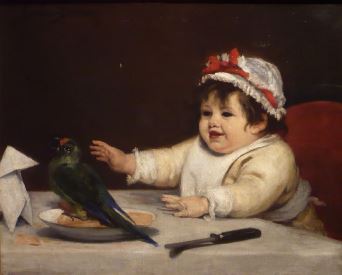
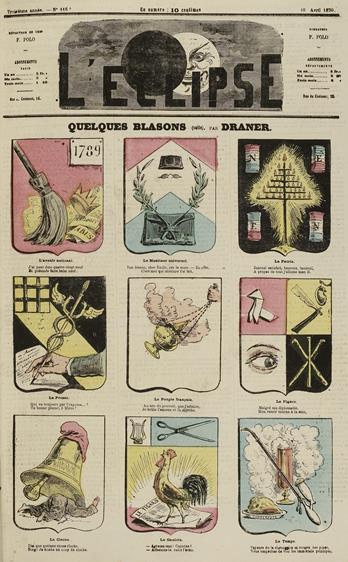
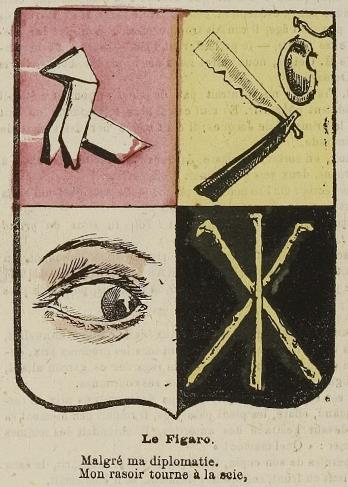
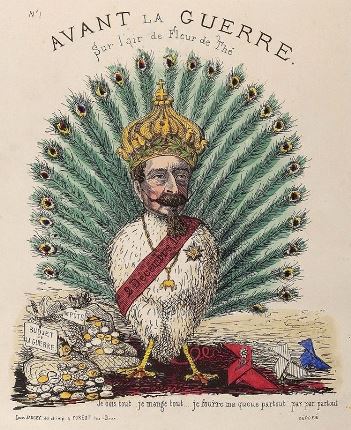
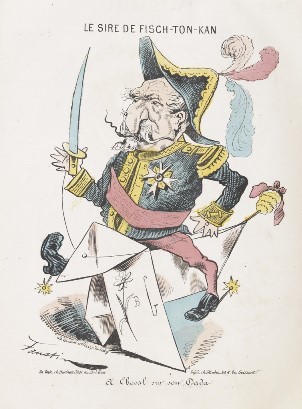
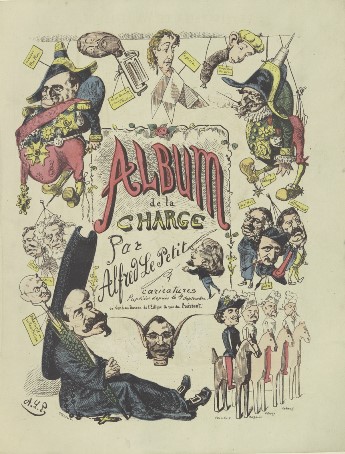
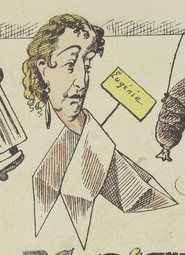
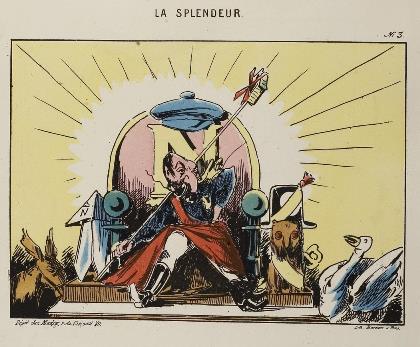
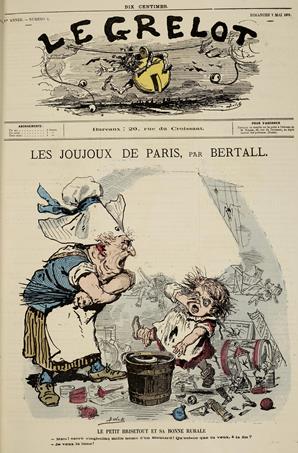
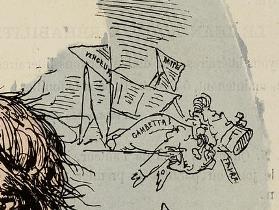
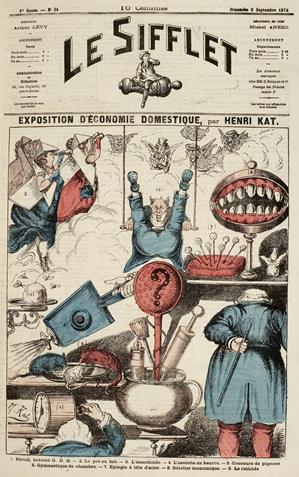
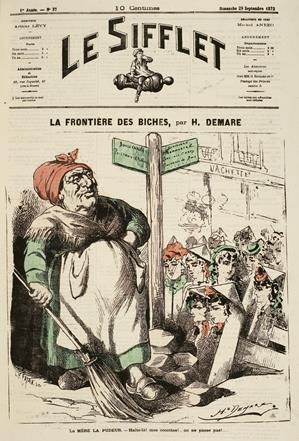
.jpg)
%20b.jpg)
